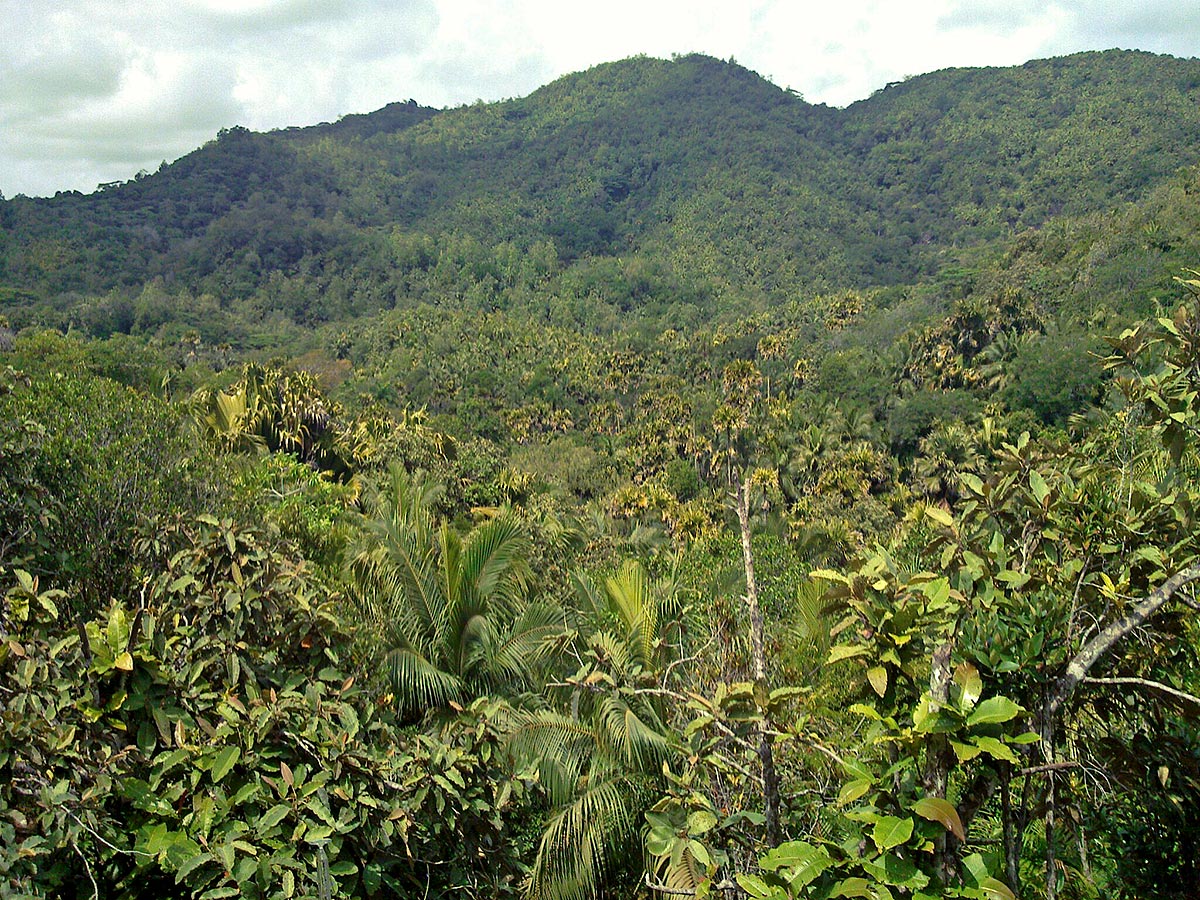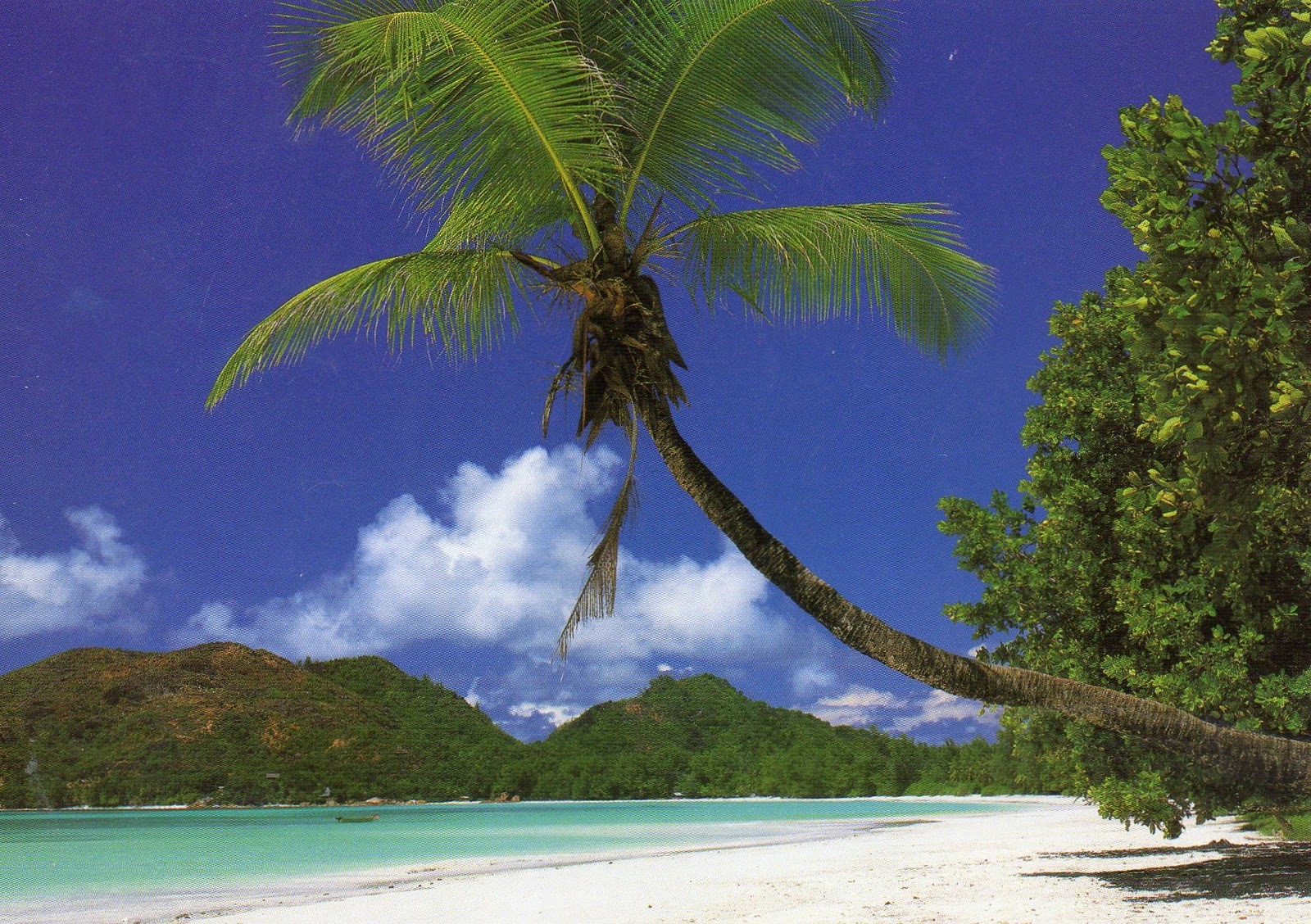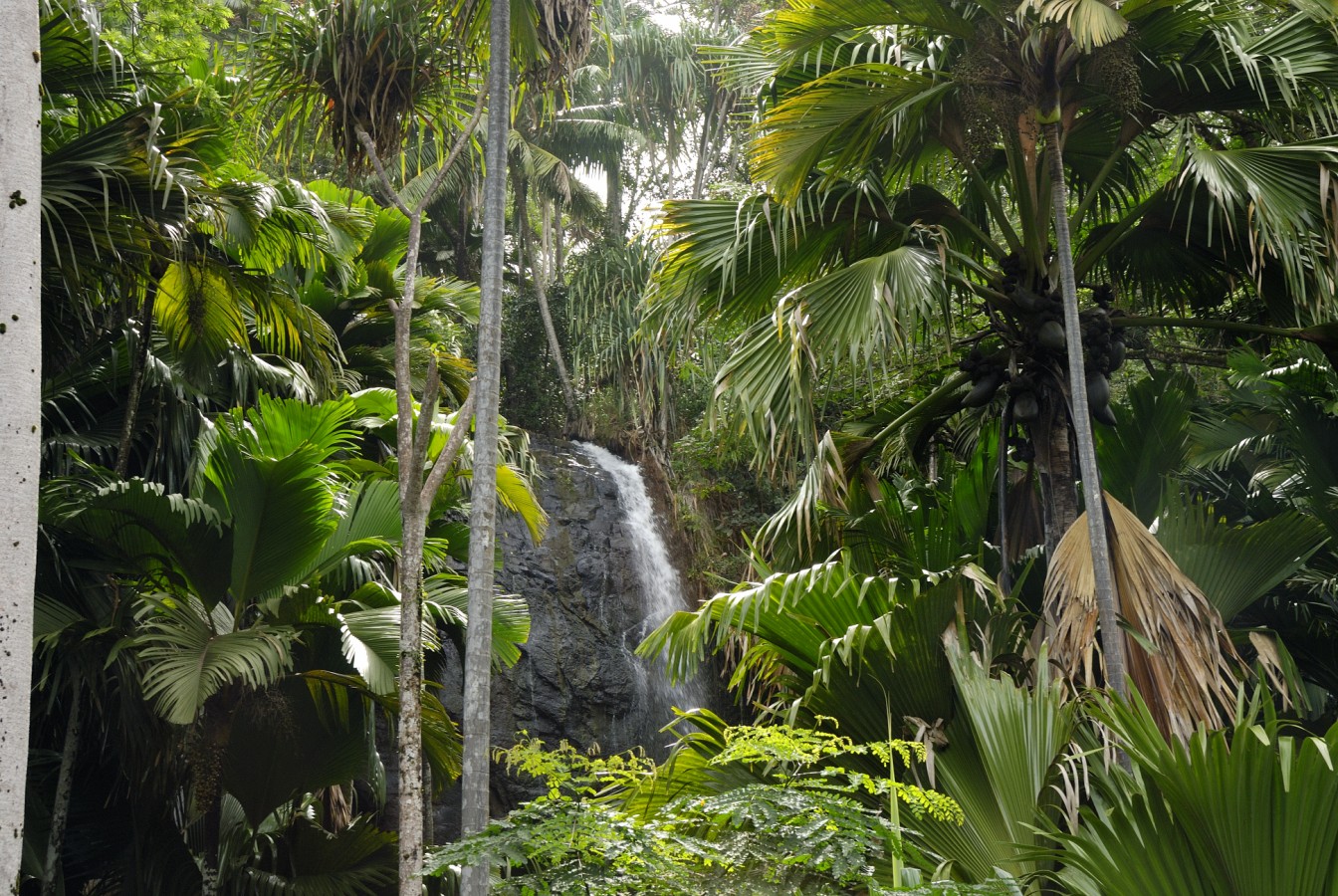In the heart of the small island of Praslin, the reserve has the vestiges of a natural palm forest preserved in almost its original state. The famous coco de mer , from a palm-tree once believed to grow in the depths of the sea, is the largest seed in the plant kingdom.
Vallée de Mai is a valley in the heart of Praslin National Park, an area which was untouched until the 1930s and still retains primeval palm forest in a near-natural state. This palm forest includes the endemic species coca de mer, of outstanding universal value as the bearer of the largest nut in the world. There has also been a rich body of legend which has developed around the species; the nut has religious significance. in the 19th century the British General Gordon produced detailed 'proof' that the Vallée de Mai was the Garden of Eden and that coca de mer was the tree of knowledge. In addition, the other five species of endemic palm are also found in the Vallée de Mai, the only place in the Seychelles where they are all found together. In addition there is the endemic black parrot, which is totally dependent on the existence of the Vallée de Mai and the surrounding palm forest.
There are four main vegetation types on the island of Praslin, three occurring in the Vallée de Mai area: lowland forest, dominated by large timber trees once covered large areas of the island but, following human settlement, this has been replaced with well developed secondary forest with the endemic palm, cinnamon, Dodonaea viscosa , mango, Sideroxylon ferrugineum and Randia lancifolia . Intermediate palm forest, unique to the Vallée de Mai, with the endemic palms, coco de mer; eroded land, following burning as well as soil erosion, previously of intermediate and lowland forest, has been recolonized by, or planted with Randia lancifolia , Chrysobalanus icaco , borsigiana , Dodonaea sp. and Dillenia ferruginea . This is the only area in the Seychelles where all six endemic palm species occur together. A further 28 endemic species of plant have been recorded, including the vine, once thought extinct and then believed to exist only on Curieuse Island. Tatamaka and Calice du Pape have been planted.
The most noteworthy species is the endemic black parrot, restricted to Praslin Island and dependent on the Vallée de Mai and surrounding palm forest. Other birds include Seychelles kestril, the bulbul, blue pigeon, sunbird and cave-nesting swiftlet. Reptiles include the endemic chameleon, Seychelles house snake, green and bronze geckos, skinks, Seychelles wolf snake and blind snake. Six species of caecilian (related to frogs but looking more like large worms) occur in the deep beds of moist humus, but these are rarely found even by scientists. The stream contains freshwater crab, the big freshwater prawn, shrimp and the only endemic species of freshwater fish, the gourgeon. Two endemic snails occur: the brown and the blackfish snail.
In a densely populated island, the survival of the Vallée de Mai in itself is a remarkable achievement; of course, it is far too small to survive on its own in any natural way, and its present status is due to some replanting of coca de mer. While the site is therefore not self-sustaining, it is still the only place which contains the ecosystem components required for the continuity of the species being conserved. The Vallée de Mai occupies the lower parts of a valley towards the head of a stream, but does not include the whole water catchments (although this lies within the Praslin National Park); this does not affect the visual impact of the site, but activities on the slopes above the valley could adversely affect the site itself.
As a granitic island, the Seychelles is a 'microcontinent' that has had quite a different history from the other volcanic or coralline islands in the Indian Ocean; therefore, it has a large number of endemics and no comparison can be made with other islands in the Indian Ocean.












